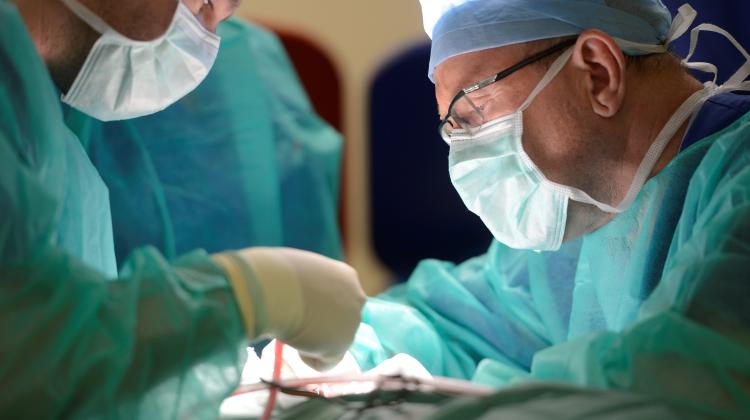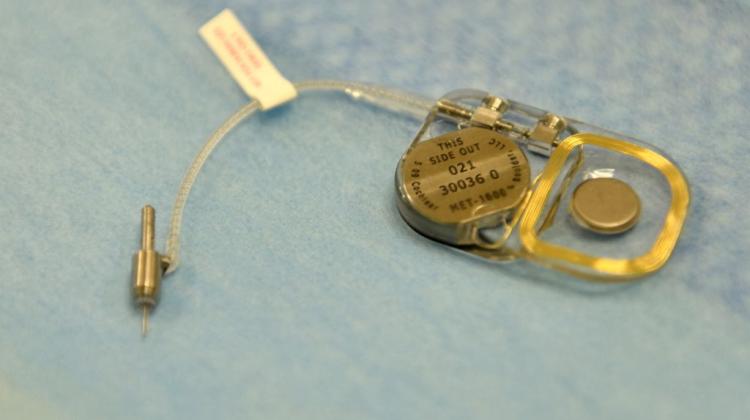New generation hearing aid implanted in Kajetany

Poland\'s first next-generation ear implant surgery, ensuring natural hearing, has been carried out at the World Hearing Center in Kajetany near Warsaw. The procedure was carried out by Prof. Henryk Skarżyński, head of the center.
"For the first time we used the Bonebridge implant, designed for people affected by unilateral deafness, conductive or mixed hearing loss, which is a result of congenital or acquired (as a result of inflammation or injury) damage to the outer, middle or inner ear" - Prof. Skarżynski told PAP.
Next-generation implant is useful when the natural path of sound transmission to the inner ear is blocked. In this situation, a system based on bone conduction technology gives a chance for hearing recovery. It is based on stimulating the skull with mechanical vibrations. Vibrations are sent directly to the inner ear, where they are processed like normal sounds (a section between the outer and middle ear is omitted).
According to Prof. Skarżynski, the new system the chance to hear surrounding sounds especially to young patients, who are too small for reconstructive ear surgery. It can be implanted earlier, without waiting for the reconstruction.
For now, the procedure is performed only in adults, in the European Union the implant is not yet officially registered for use in children. "But I think that this will happen soon, and then we will implant it also to younger patients" - added the expert.
The device is miniaturized so that it fits under the skin. Is anchored in the temporal bone, where it processes the received signals into mechanical vibrations transmitted to the surrounding bone. From there they reach the inner ear, where they are transformed into nerve signals and transferred in the form of pulses to the auditory nerve, as is the case with normal hearing.
The only part that remains on the outside is the audio processor which converts sound it into signals transmitted through the skin to the implant. This is necessary, because placing it under the skin would result in hearing not only the sounds coming from the outside, but also, for example, the sound of chewing food, which would cause a lot of discomfort. It is convenient to use. It can even be hidden under the hair.
"Technologically, it is clearly a qualitative leap" - emphasized Prof. Skarżyński. Unlike a cochlear implant, it ensures natural hearing. Different frequency bands are available, which can be adjusted on several channels to ensure optimum comfort.
The effect of hearing that can be obtained is checked before implantation of the implant. Its activation is possible 2-4 weeks after the procedure.
PAP - Science and Scholarship in Poland, Zbigniew Wojtasiński
zbw/ mrt/
tr. RL
Przed dodaniem komentarza prosimy o zapoznanie z Regulaminem forum serwisu Nauka w Polsce.
















